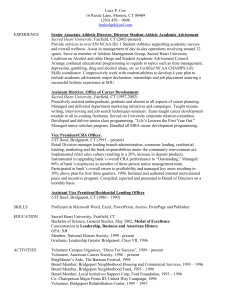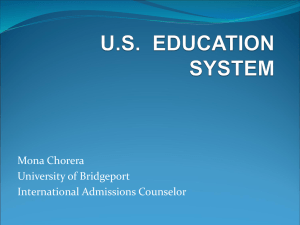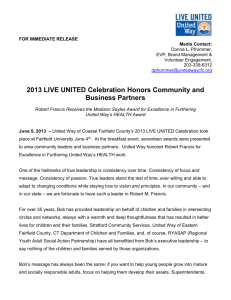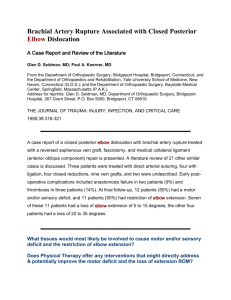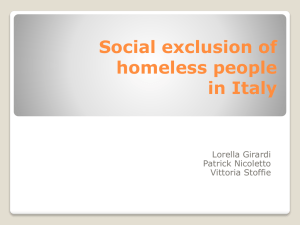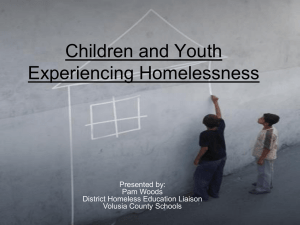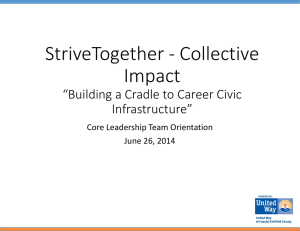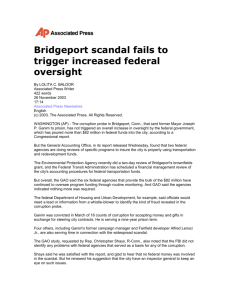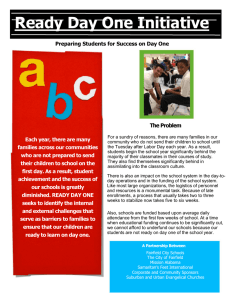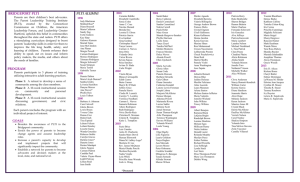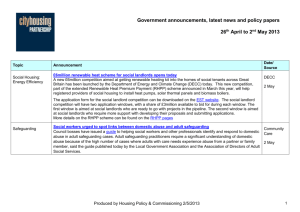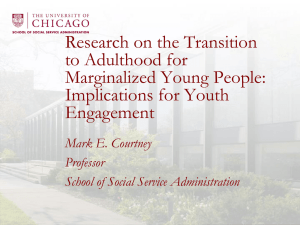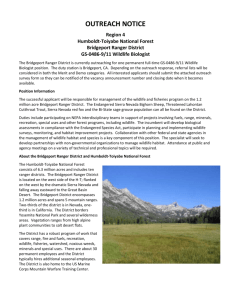Bridgeport Housing First *
advertisement
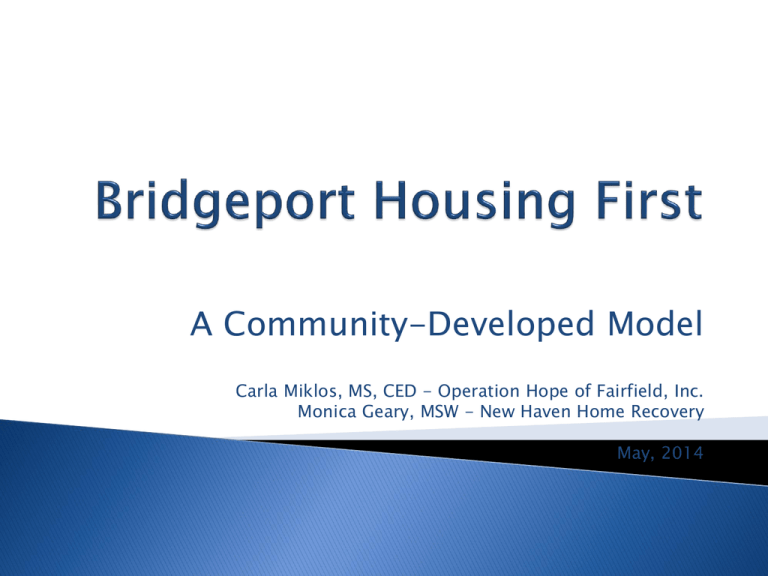
A Community-Developed Model Carla Miklos, MS, CED - Operation Hope of Fairfield, Inc. Monica Geary, MSW - New Haven Home Recovery May, 2014 Bridgeport Housing First (BHF) is a true community collaboration focused on eliminating homelessness for the most vulnerable population in the Greater Bridgeport (CT) area. Bridgeport is one of the poorest cities in America, located in one of the wealthiest counties in the country (Fairfield County, CT). The Stamford-to-Bridgeport, CT MSA (Metropolitan Service Area) has the largest disparity in income in the US. This high cost, low income area struggles to solve the issue of homelessness through traditional means. Created a interagency, multi-disciplinary team. Aligned efforts with Opening Doors goals. Solicited community input, cooperation, and support. Formed strong partnership with real estate community. Identified the most vulnerable and most in need. Alpha Community Services-YMCA Housing and Case Management Services Housing Authority of the City of Bridgeport Project Based Section 8 Vouchers Operation Hope of Fairfield, Inc. Housing and Case Management Services New Haven Home Recovery Administrative Oversight and Benefits Counseling Supportive Housing WORKS Housing Search, Coordination, Team Supervision Landlords, Property Managers, and Housing Developers – Rental Units Local Mental Health Authority – Referrals, Community Heath Centers – Physical and Mental Evaluation, Medication Health Services Local Non-Profit Organizations and Faith-Based Community – Counseling, Domestic Violence Intervention, HIV AIDS Support, Work Readiness, Job Training, Addiction Counseling, Food, Clothing and more. Recruited and trained volunteers to participate in registry week. Administered questionnaire focused on physical and mental health, length of time homeless, and more. Created list based on vulnerability – prioritizing those most likely to not make it through another winter. Vulnerability Index - VI 100K Homes Campaign 284 people completed the survey. 171 fit HUD’s definition of chronic homeless. 115 were both chronically homeless and medically vulnerability. 44 veterans completed the survey. 19 responders were under the age of 25. The community benefited by participating, increasing awareness, empathy, and collaboration. Findings allowed us to create a Shared Registry of those in need, ranking those surveyed from most to least vulnerable. Screen clients to confirm chronic homeless status. House clients based on need, preference, accessibility. Assess individual level of need for each household. Provide intensive case management – support, advocacy, skill building. Connect clients to community supports for employment, mental health, substance abuse, DV, parenting, education, etc. Effective Social Service Infrastructure Inter-agency Collaboration Leveraging Services Evidenced-based Program Design CTI: Critical Time Intervention SOAR: Benefits Counseling Motivational Interviewing Alignment of Community Resources Cross-sector Collaboration, Access to Services Innovative Effort to House the Homeless Targeting the most vulnerable, partnering with housing authority and landlords, coordinated access and shared data tracking/reporting Keep educating your community about the population being served, the benefit to housing them, the ways you can work together, how all can play a part in the success. Find good landlords, partner with housing authorities and others to create housing options. Don’t wait for funding or 100% consensus to start. Have patience as the system develops. Build trust and rapport with your partners; make sure you can deliver what you promise and hold them accountable for the same. Believe you can make a difference for those who truly need a second chance! Initial funding and sustainability. Working with many different organizations and agencies and meeting all rules, regulations, and criteria while trying to effect systems change. Complex issues clients face (no ID’s, criminal convictions, addiction, mental health, language barriers, serious health issues, more) can slow down process. Prepare clients in crisis that the process may take time (housing is not always immediate). The collaborative has housed over 150 of our region’s most vulnerable homeless individuals and families. 95% of BHF households have remained stably housed for 6 or more months. We have seen a 42% drop in the rate of chronic homelessness in the last two years. In 2012, the collaborative received the National NAHRO award for excellence for our efforts. In 2013, Bridgeport was recognized by the 100,000 Homes Campaign as a member of the 2.5% club. This distinction recognizes communities that house 2.5% of their chronic population each month. Bridgeport is currently housing at a 6.57% rate monthly! Ongoing modification and adaption of model to best serve the community. Continuous VI process to capture all in need. Staff training, hiring, support. Program evaluation and data analysis. Strengthen partnerships with service providers, funders, landlords, more. Integration of services and housing. Demonstrate cost savings and efficiencies to this system change. Prepare to adapt to changes in healthcare field, including health care reform effects and future Medicaid reimbursement. Identify and secure funding!!! Why create a collaboration in your community? Who will be your partners? What other services will you need? How will you target your efforts? What resources can you leverage or attract to get started? What outcomes are you hoping to achieve? How will you sustain your efforts? Thank you! Contact us: Carla Miklos, Operation Hope of Fairfield, Inc. cmiklos@operationhopect.org Monica Geary, New Haven Home Recovery mgeary@nhhr.org
